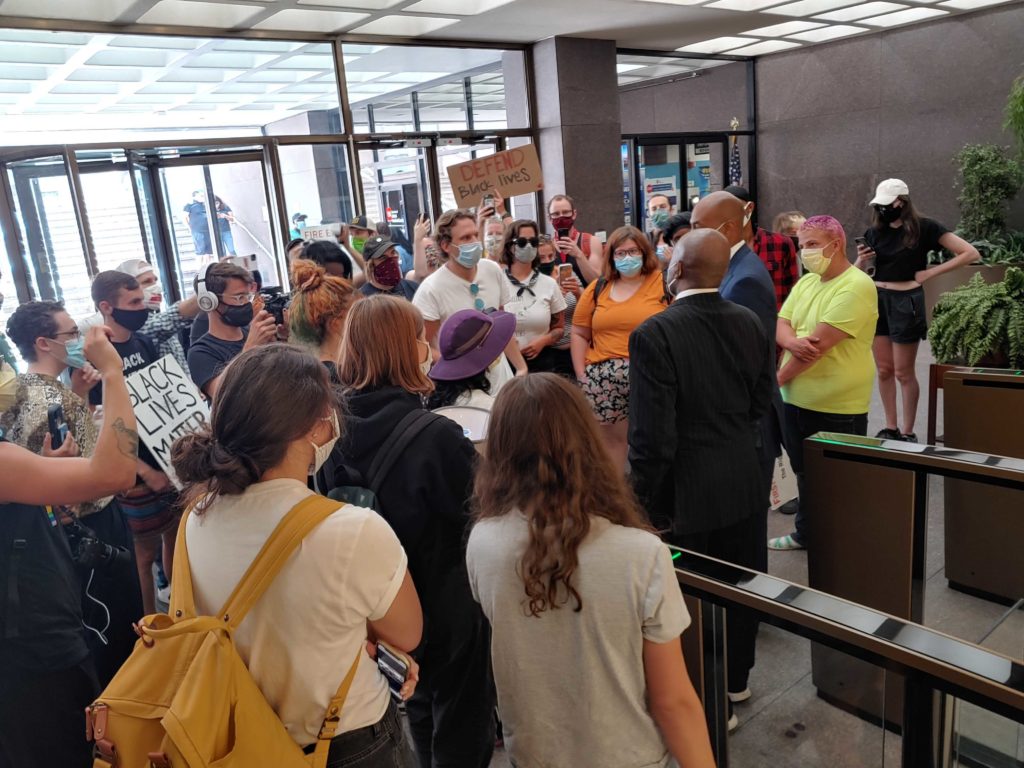
After hearing impassioned speeches from Black lawmakers, the Tennessee State Capitol Commission voted for the first time to remove the bust of Nathan Bedford Forrest.
And, in a last-minute vote, the group also voted to take out two other military figures from the Capitol’s second floor.
The initial proposal — of removing Forrest— has been championed by Black Sen. Brenda Gilmore, D-Nashville, for years, as well as by activists.
“These monuments represent the values that unite us and the moral principles that guide our society,” Gilmore told the panel. “Nathan Bedford Forrest does not represent the values of Tennessee.”
Forrest was a Confederate general and believed to be the first grand wizard of the Ku Klux Klan. He was also a slave trader and is often held responsible for the massacre of Union troops, many of the Black, at Fort Pillow in West Tennessee.
Gilmore explained how she feels every time she walks the hall of the state capitol and sees the bust.
“Tears come to my eye every time I get off the elevator and look at the Forrest bust,” she said. “I could hear the bells and the cries of the 200 surrendered soldiers. Soldiers that were surrendered but where still slaughtered by his command.”
The commission voted 9-2 for removal. A proposal presented by Comptroller Justin Wilson to remove all military figures out of the second floor of the state capitol was added during to the measure. That means memorials to Union Admiral David Farragut, whose bust stands opposite Forrest’s in the Capitol, and World War I Admiral Albert Gleaves will also be removed.
Wilson, Secretary of State Tre Hargett and State Treasurer David Lillard — who all voted against removing Forrest’s bust the last time it was considered in 2017 — voted for it this time.
Senate Majority Leader Jack Johnson, R-Franklin, and House Rep. Matthew Hill, R-Jonesborough, voted against the removal. The two lawmakers represent state legislators on the commission.
Johnson said he polled state senators and that just over half told him they want the bust to stay. He said his vote represents the will of the upper chamber.
“I’m not compelled to do that,” Johnson said. “I’m not compelled to poll my members and vote according to their wishes, but I felt like it was important to have that conversation with all of the members of my body that I respect so much.”
State Rep. Mike Sparks, R-Smyrna, and Sen. Joey Hensley, R-Hohenwald, asked the commission for the bust to stay.
Long process remains
The petition will now go to the Tennessee Historical Commission for a final vote. They won’t consider it until at least three months, and the process could take as long as a year.
Nonetheless the vote was seen as a victory for longtime opponents of the bust of Forrest, which has faced criticism since it was erected in 1978.
“I think he’s a traitor,” said activist John Smith. “I think he’s a traitor. This is the United States of America not the Confederate States of America. So it needs to come down out of a place of honor.”
Smith said he respects other people’s history and their desire to honor their heritage, but he thinks the Tennessee State Museum near the Capitol on the Bicentennial Mall is a more appropriate place for the bust to go.
Three years ago, the push to remove Forrest’s bust failed despite support from Tennessee Gov. Bill Haslam. One reason the petition passed the State Capitol Commission this time was behind-the-scenes work done by Gov. Bill Lee to set up a vote.
Last month, Lee reappointed one of the commission’s few Black members, as well as naming two more Black men to the body. Those members all backed removal.
“This would not be a move to erase history,” said new commission member Hallerin Hill, a radio host. “Otherwise you wouldn’t spend a $160 million building a state-of-the-art, almost national-worthy [Tennessee State] Museum — that enshrines in the museum a separate section for the Civil War.”
Concerns about lack of access to meeting
One other point of contention at the commission meeting was access. The public was not allowed inside the room where the meeting took place, even though it was at a public building.
A spokesman for the commission chair told WPLN News the room could only be filled to half-capacity based on social distancing guidelines. So only press, state staff and lawmakers were allowed.
The meeting was streamed online.
Justin Jones, an activist who remained outside the room throughout the meeting, nonetheless celebrated the decision.
“We’ve been fighting for this for five years,” Jones said. “It’s a big victory for the movement, but is not enough. This is just one step forward.”
WPLN News’ Ambriehl Crutchfield contributed to this report.
Correction: An earlier version of this story misstated the timeframe for a vote by the Tennessee Historical Commission. The earliest they could have a final vote is in February 2021.

